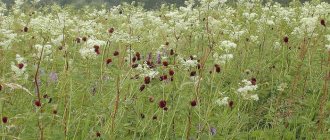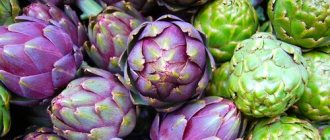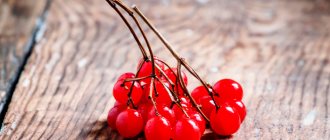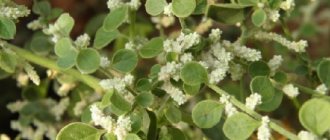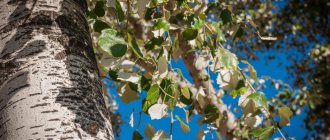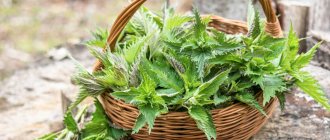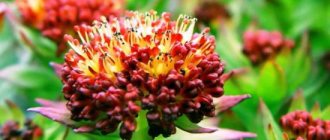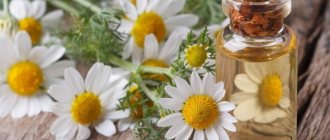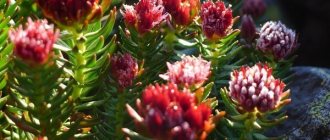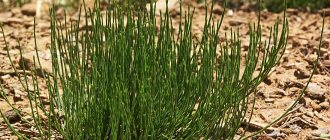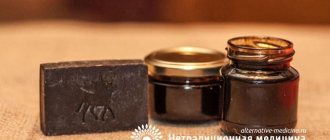The plant world is in many ways an incompletely studied area of science. It is not surprising that we will continue to learn about the beneficial properties of some plants. For example, do you know such a plant as erva woolly or floor pala - a herb whose use is found mainly in urology. For many it is something exotic, completely unknown. Read about what kind of plant this is, why herbal medicine based on it can be effective for the kidneys, and how to make medicine from pollen yourself in our article.
Botanical description of Erva woolly
Paul fella and erva woolly are the same plant. The biennial belongs to the Amaranth family. In the wild, the branched bush grows in humid subtropics. Ceylon is considered the birthplace of the plant; today it is cultivated in Ukraine and Georgia.
Erva has a taproot system, a grayish main root and lateral branches. The stems of the erva are rich green, very branched, both creeping and erect (can be different). The grass has elliptical leaves, some leaves can even be called round. They are about 2 cm long and slightly less wide. The flowers are small and inconspicuous with a cream perianth. Flowers form spike-shaped inflorescences.
The herbaceous plant bears fruit, its fruits look like boxes with a long spout. Leaves, seeds, root parts and stems of the plant are used as medicinal raw materials. If you buy the medicine at the pharmacy, it is presented there as mixed raw materials. If you collect the grass yourself, you need to do it in October, at the time of fruiting. Then the erva grows up to 40 cm.
It is recommended to store the collected raw materials in fabric bags in a dry and cool place. The plant should not be stored for longer than three years; it will no longer demonstrate its medicinal properties.
Application in cosmetology
The erva plant has regenerating, anti-inflammatory and antiseptic properties. It is often used in the field of cosmetology to restore the structure of the skin, eliminate harmful microflora and improve blood circulation.
To get rid of rashes, blackheads and acne, it is recommended to wipe your face with a concentrated herbal decoction twice a day:
- dry raw materials - 2 tbsp;
- water – 100 ml.
The product is prepared by heating over steam for 20 minutes. Pass through thick gauze and pour into a bottle made of dark glass.
After use, rinse off excess product with cool water. The decoction wonderfully tones and nourishes the skin, removes irritation, acne and heals minor damage. Helps get rid of harmful microorganisms that contribute to acne and rashes.
Chemical composition
It was the chemical composition of the plant that made scientists pay attention to it: there are a lot of useful components in this nondescript grass.
Found in the plant:
- potassium - helps reduce carbon dioxide levels in the blood, stabilize the water-salt balance, normalize pressure in the arteries, control muscle contraction;
- calcium – controls the passage of nerve impulses, forms (among other elements) bone tissue, maintains normal metabolism, has a beneficial effect on blood clotting, strengthens blood vessels and the immune system;
- phenolic acids - can neutralize pathogenic bacteria, speed up tissue regeneration after injuries, relieve pain, slow down the formation of ulcers;
- alkaloids – normalize blood flow, help stop bleeding, relieve pain and spasms;
- flavonoids - calm the central nervous system, resist free radicals, make vascular walls stronger, promote the effective functioning of the adrenal cortex, control heart rhythm;
- pectins - help remove toxins, metabolism and even reduce the level of “bad” cholesterol;
- amino acids – regulate vascular tone, help reduce it, thereby stabilizing blood pressure, increase the level of hemoglobin in the biofluid, and promote the evacuation of bile clots;
- inorganic salts – accelerate tissue healing;
- alkanes – envelop, heal wounds.
Erva woolly, the benefits and harms of which are described in this material, is known for the gentle removal of kidney stones. However, this is not its only medicinal effect.
Medicinal properties of pol pala herb
In urology, this medicine is really known to a greater extent. And all this is due to the fact that Erva removes sand from the kidneys, dissolves kidney stones, and cleanses the body of urea, uric acid, chlorides and radionuclides.
Other diseases that Erva can treat:
- glomerulonephritis is a kidney disease characterized by damage to the renal glomeruli (glomeruli);
- urethritis – inflammation of the urethra (or urethra);
- pyelonopheritis is a nonspecific inflammatory process that primarily affects the tubular system of the kidney;
- pyelitis is a diagnosis made with inflammation of the mucous membrane of the renal pelvis;
- prostatitis – this term refers to an inflammatory lesion of the prostate gland;
- cystitis is an inflammatory process in the bladder.
The herb has a gentle effect on the organs of the urinary system, allowing them to maintain potassium and water balance.
Erva also treats gynecological pathologies - ovarian tumors, fibroids, inflammatory processes. It also participates in complex therapy for pathologies of the pancreas, liver diseases, diabetes mellitus, polyarthritis, stomach ulcers, gout, bronchitis, atherosclerosis, etc. Of course, taking infusions and decoctions is more advisable in the initial stages of the disease, when herbal medicine can still cope without the use of powerful pharmacology.
You can also watch a video about the beneficial properties of pol-pala.
Indications
Erva woolly is widely used in urology, nephrology, therapy, and cardiology. The following diseases are indicated for its use:
- Chronic pyelonephritis and glomerulonephritis;
- Acute and chronic inflammation of the bladder wall (cystitis);
- Hepatitis and cirrhosis of the liver;
- Some gynecological diseases (uterine fibroids, menstrual irregularities);
- Arthritis of various etiologies, accompanied by pain;
- Diseases of the upper and lower respiratory tract (tracheitis, laryngitis, bronchitis, lobar pneumonia);
- Gastritis and stomach ulcers during periods of calm;
- Decreased immunity and for the prevention of viral diseases (ARVI, acute respiratory infections).
Contraindications and side effects
Erva woolly has many positive properties, but this herbal medicine is not without contraindications. There are physiological contraindications - pregnancy, childhood (up to 12 years), lactation, individual intolerance.
Among the pathological contraindications:
- rickets;
- osteoporosis;
- allergy;
- hypoparathyroidism;
- renal osteodystrophy.
A side effect of the floor is softening of the enamel on the teeth. But this negative point can be mitigated: it is recommended to drink decoctions and infusions through a straw. Before using the medicine, consultation with a specialist is necessary.
Consumption rate
Erva herb has powerful effects, so it is recommended to avoid overdose. The optimal frequency of use is no more than 3 doses per day. In rare cases, 4 times are allowed. The correct dosage depends on the concentration of the decoction or tincture.
A weak decoction (1 tablespoon per 300-500 ml of water) can be drunk in a glass. A decoction of medium concentration (1 tablespoon per 200 ml of water) is recommended to drink 150 ml. Concentrated alcohol tinctures are allowed to be drunk in 10-20 ml doses.
Recipes
Erva is known for its strong diuretic effect, but the effectiveness is not ensured by the aggressiveness of the process - there will be no rapid dehydration of the body. Synthetic drugs cannot boast of such softness.
Erva woolly for kidney stones
Before using the medicinal capabilities of the floor, you need to know exactly the composition of kidney stones. The herb only works on urate stones. Other herbal diuretics should not be taken if you are already taking Erva. Also, during the treatment period, you should not eat spicy or salty foods, and you should not take even small doses of alcohol. A lasting result can be achieved not by one course of treatment, but by three. But the break between courses should be six months.
It is recommended to drink herbal preparations on an empty stomach, 20 minutes before meals - this way the medicine will be better absorbed.
How to use:
- In the form of a decoction. Pour 3 teaspoons of dry raw materials into 300 ml of boiling water. The composition needs to be boiled for about 7-9 minutes. After this, the mixture is removed from the heat and kept for 3 hours. The strained composition should be taken three times a day. You cannot drink more than 100 ml at a time. The optimal single dose may be 50-70 ml.
- In the form of an infusion. It's easier to make it in a thermos. Pour 1 tablespoon of dry herbs into its bowl and pour 200 ml of boiling water. The exposure time is the same - 3 hours. The dosage is as follows: divide the entire composition into 2 parts, take 2 times a day.
By the way, the remains of infusions and decoctions can also be used. They are used to make medicinal lotions that help get rid of boils and acne. The above dosage is strictly for adults. Decoctions can be prepared only for 1 day, that is, drink them properly fresh. Each subsequent technique requires new preparation.
Paul fell for weight loss
The herb is half chopped, crushed for preparing a decoction.
A decoction of the herb is also considered a good way to lose weight. Of course, if, in addition to drinking this drug, you make other efforts to lose excess weight. The drink normalizes the functioning of several systems at once (urinary, digestive, nervous), which also helps with weight loss. Due to this treatment, the quality of sleep improves, excess salt and water are removed from the body.
You shouldn't expect quick results: but rapid weight loss is fraught with even more extra pounds. To lose weight, you can drink pharmaceutical tea; the instructions for using Erva woolly describe exactly how to drink the tea. It is better not to put sugar in such a drink. Be sure to check the list of contraindications.
Evra decoction
And now a little more about how to prepare the decoction yourself. Take 1 teaspoon of herb and pour it into an enamel teapot or ladle. Fill this raw material with 240 ml of filtered water. Place the container with the filled erva over medium heat, boil the mixture for about 5 minutes. The finished broth must be allowed to brew for about 3-4 hours. After this, it should be strained thoroughly. Before use, the decoction is slightly warmed up. But you cannot store such a product in the refrigerator for more than two days.
Erva herb decoction is an excellent remedy against kidney stones
Adults can take 50-100 ml per day, dividing the entire decoction into 3 doses. Adolescents from 12 years of age (after agreeing on such treatment with a pediatrician) take 15 ml of decoction, also 3 times a day. The minimum therapeutic course is 10 days, the maximum is a month. If the medicine is poorly tolerated, nausea, gastrointestinal problems, headache occur, treatment is stopped.
Infusion
The infusion is prepared in almost the same way as the decoction, but still some nuances distinguish these 2 dosage forms. After rinsing an enamel container with boiling water, add 1 teaspoon of dry erva into it. Pour 1 cup of boiling water over the raw material. Place the container in a water bath and boil for 10-15 minutes. Be sure to stir the product during preparation.
Leave the composition in a water bath and let it cool in this state. The finished infusion is filtered and the herb is squeezed out. Do not forget to increase the volume of the product to the original - add the required amount of clean boiled water. The dosage and method of application are the same as for the decoction.
We present to you a video recipe for preparing an infusion of erva.
Tea
Both dry and fresh herbs are suitable for making tea. 2 teaspoons of vegetable raw materials are poured with 1 glass of boiled water, covered with a lid and kept for no longer than 15 minutes. After this, the tea can be strained. How to take woolly erva in the form of tea: warm, optionally with the addition of a small amount of honey. A small cup a day will be enough.
For the cardiovascular system
For various cardiovascular diseases, it is recommended to regularly drink a decoction of the herb. This drug is a good prophylactic to prevent heart attacks. Thanks to its complex and unique composition, the plant helps get rid of swelling and remove toxins. This in turn reduces blood pressure and normalizes heart function.
Medicines prepared on the basis of erva woolly strengthen the tissue of the heart muscle, reduce excessive stress on the heart and reduce blood clotting, preventing the formation of blood clots. This reduces the likelihood of a stroke.
To treat hypertension, it is recommended to regularly take a decoction prepared using the following method: 1 tbsp. plants (dry and crushed) are poured with 250 ml of clean heated water. Then boil over steam for 10 minutes. It is strongly recommended to use the product slightly warmed, 125 ml twice a day.
Reviews
Erva woolly for kidney stones – reviews:
Larisa: I encountered urolithiasis at the age of 30. Before this, I had actually never taken pills. And the doctor told me that since the kidney stones are urate and few in number, I can take herbal medicine. So I started drinking half a glass. I took the first course using homemade medicine and made decoctions. Then she started taking pharmaceutical medicine. And the problem went away. An ultrasound scan a year apart showed excellent dynamics.
Valeria: I have had kidney problems since I was young. During my first pregnancy (22 years old), pyelonephritis “happened.” And after pregnancy, it suddenly appeared again a year later. And then the doctor said that the stones would soon manifest themselves, and prescribed woolly erva. This is a good remedy, I say without a doubt. But then I was 24 years old, I could experiment with dosages, which is why Erva showed its negative properties - I started having problems with my teeth. I can confidently say: you can be treated with Erva, but you also need to remember about its harmful effects and not exceed doses, drink strictly through a straw.
Where to buy for treatment
It’s not difficult to find pol pala or woolly erva in a pharmacy. Herbal raw materials are sold without a prescription; 30-40 g of medicinal herbs can be bought for 70-120 rubles (depending on the manufacturer and region of sale). Recipes and methods of use are usually indicated on the packaging.
Herbal treatment is a therapy that has been used for thousands of years. It does not always give the expected results, but if you start using herbal medicines in time, if there are no contraindications to such treatment, if the doctor highly evaluates the possible effectiveness, why not take advantage of the healing gifts of nature. And the floor fell - grass, which can pleasantly surprise in this regard.
Among the herbs that should be in every home medicine cabinet, celandine occupies a special place.
Why? You will learn about this from our article: “The medicinal use of celandine: folk recipes for urological, gynecological and other diseases, reviews.” Author of the article Katerina Ivanova : “While still studying at the university, I became interested in research work in the field of medical psychology.
And for 15 years now, the topic of healthy lifestyle has interested me both as a researcher and as a supporter of a healthy lifestyle. Herbal medicine, proper nutrition (but not diets!), physical activity (physical therapy, cardio training, fitness), taking care of psychological health, active recreation - these are what I have in my life.” Article read: 2,405
Miracle drug from local plant materials
In official medicine, the biennial plant Pol-Fallen grass has another botanical name, Erva woolly, which was brought to our country from the island of Ceylon, where the local population was well aware of the miraculous properties of the plant and therefore used it for a long time for the prevention and treatment of many diseases.
This drug appeared in our specialized pharmacies of medicinal herbs relatively recently, but gained nationwide fame, as it was in great demand. Crushed plant materials in the form of:
- · roots and stems,
- leaves and seeds
was used by our population not only for preparing medicinal decoctions and infusions for medicinal purposes, but also for growing in their own plots, where special knowledge is required for the agricultural technology of this crop, because this plant requires certain climatic conditions.
The full growth of half-fallen grass requires a considerable amount of solar heat and light, and the main condition for obtaining maximum medicinal properties is high humidity, which is especially difficult to obtain in our climate, so a gardener definitely cannot do without the proper patience and persistent perseverance.
In the best periods of the year, the useful plant reaches a maximum height of 1.5 meters, and the thickness of the stem is 1 centimeter with elliptical or round leaves with a small size of 2 by 1.5 centimeters. The tap stem has lateral branches with strong branching, erect or creeping.
Inconspicuous spike-shaped inflorescences during the flowering period from July to cold autumn have small creamy-white flowers, which, as they ripen, turn into precious box-shaped fruits of elongated seeds, from which our skilled farmers are trying to grow and acclimatize this unique plant in our country.
Although the first steps to grow this plant in our country were successful, laboratory studies showed a slightly reduced quality of medicinal properties compared to its Ceylon predecessor.
But, despite these studies of medicinal use, the herb grown in our climate has not completely lost its medicinal qualities, and therefore requires a little more.
And proof of this is the positive reviews of cured patients who felt its healing effect in the use and complex treatment of many complex diseases of the human body.
During the summer season, gardeners growing this miraculous plant carefully preserve each flower, because it will subsequently produce valuable seeds for future harvests. Therefore, a herbal plant grown up to 30 centimeters in height is cut several times during the season.
When storing, they dry it in the fresh air under a ventilated canopy, and in late autumn they also do this with the roots of the plant. Dried and prepared natural medicinal raw materials are stored in canvas bags or paper bags for three years.
Since 1992, this wonderful herb has been included in the medicinal register and approved for use as a medicine in Russia, therefore the Russian Ministry of Health has approved instructions for the use of medicinal herbs.
A little later, an industrial technology for growing this plant in the climatic conditions of our country was even developed.
